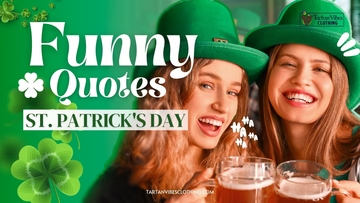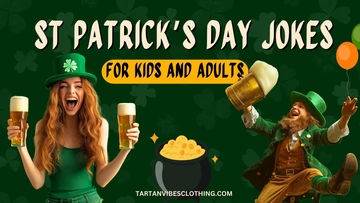Table of Content
Introduction
Ah, St. Patrick’s Day —the one time of the year when everyone is slightly Irish! Whether attending a lively parade, donning your best green attire, or toasting with a pint of Guinness, this holiday is rich with history, culture, and St Patrick’s Day symbols.
But have you ever wondered why shamrocks, leprechauns, and pots of gold are so closely associated with March 17th? These symbols hold deep cultural and historical significance, reflecting Irish traditions, mythology, and St. Patrick’s legacy.
Let’s dive into the fascinating world of St Patrick’s Day symbols and uncover the stories and meanings behind them! 🍀
St Patrick’s Day Symbols and Their Meanings
1. The Shamrock
The shamrock is one of the most recognizable St Patrick’s Day symbols. According to legend, while spreading Christianity in Ireland, St. Patrick used the shamrock's three leaves to explain the Holy Trinity—the Father, the Son, and the Holy Spirit.
But the shamrock’s significance goes beyond religion. In ancient Ireland, the Celts considered it a sacred plant, representing rebirth and renewal in the spring. By the 17th century, the shamrock symbolized Irish pride and resistance as the English imposed restrictions on Irish culture and Catholic practices. Many Irish rebels wore shamrocks on their clothing as a sign of defiance.
💡Fun Fact: Did you know the original color associated with St. Patrick's was blue? Green only became linked to the holiday later, thanks to Ireland’s lush landscapes and nationalist movements.

Ready to embrace the luck of the Irish? 🌿 Learn Why the Shamrock Is a Symbol of St. Patrick's Day and celebrate with true Irish spirit! 🍀
2. The Green Color
On St. Patrick’s Day, wearing green is almost mandatory—but why?
Ireland’s nickname, “The Emerald Isle”, comes from its breathtaking green countryside.
Green represents Ireland's Catholic identity, as seen in the Irish flag (green for Catholics, orange for Protestants, and white for peace).
Wearing green is believed to ward off leprechauns, who like to pinch anyone not wearing it!
In modern times, cities take green to the next level—Chicago dyes its river green, famous landmarks like the Sydney Opera House and Empire State Building glow green, and millions of people wear green attire, from hats to shamrock-shaped glasses.

3. Leprechauns
No Saint Patricks Day symbols list is complete without leprechauns —those mischievous little men in green coats and buckled hats.
Leprechauns originate from Celtic mythology, where they were shoemakers for fairies. They were known to be clever tricksters, always guarding their hidden pots of gold. According to legend, if you catch a leprechaun, he must grant you three wishes in exchange for his freedom.
💡 Did You Know? Leprechauns were initially depicted wearing red coats, not green! The shift happened in the 20th century as green became the dominant color of Irish identity.
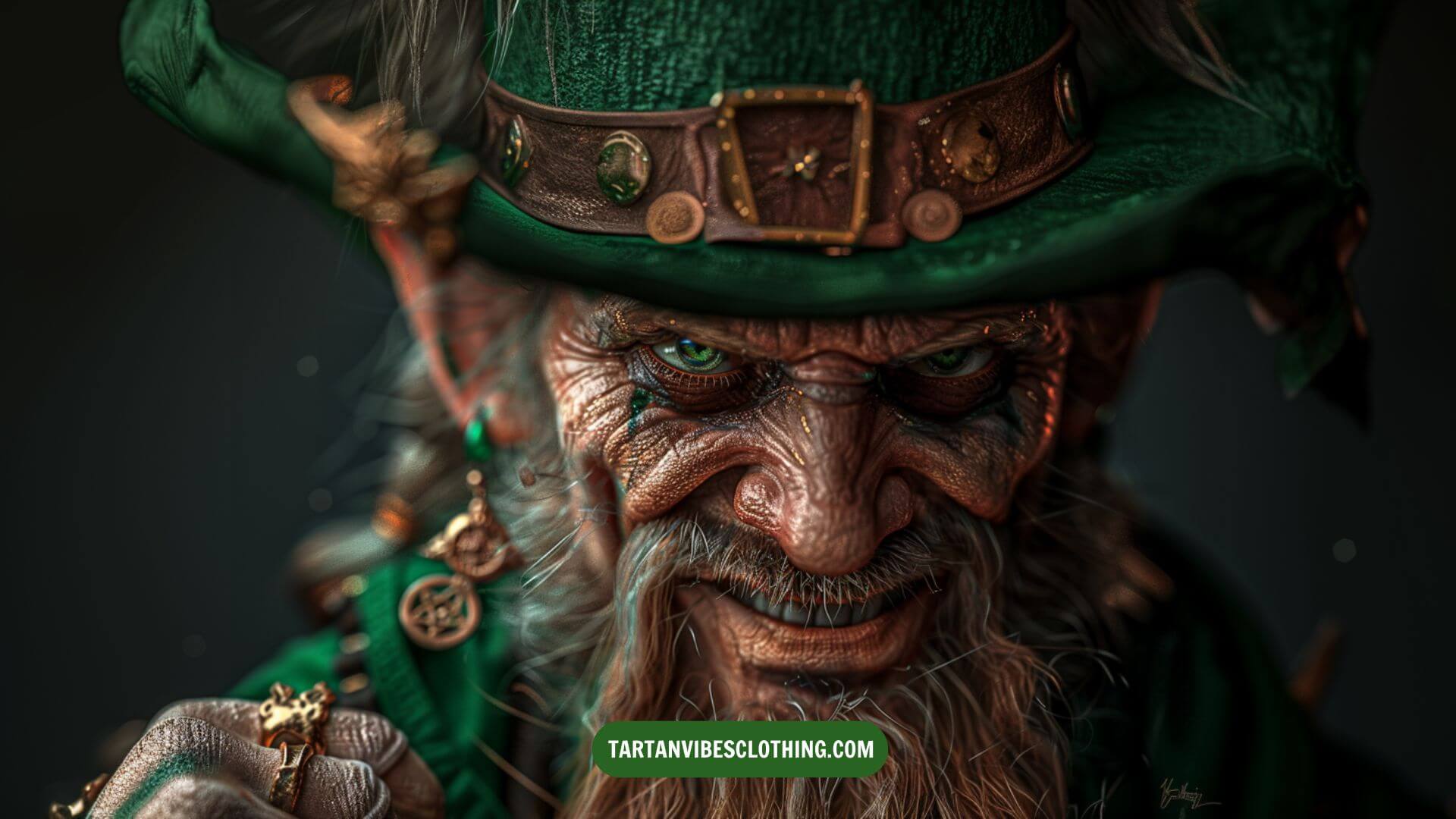
Think you know leprechauns? 🍀 Think again! Dive into 20 Interesting Facts About Leprechauns You Didn’t Know and uncover their hidden secrets! 🌈✨
4. Irish Music
Lively fiddle tunes, bagpipes, and rhythmic bodhráns (Irish drums) are essential symbols of St Patrick’s Day. Music has played a vital role in Irish culture since the Celts used song and dance to preserve their history and legends.
Traditional Irish instruments include:
The fiddle – The Irish version of the violin, known for its fast-paced melodies.
The bodhrán – A handheld Irish drum used to create deep rhythms.
The uilleann pipes – The Irish form of bagpipes, known for their hauntingly beautiful sound.
The tin whistle – A small wind instrument that’s easy to learn but hard to master!
Irish music was outlawed during English rule, yet the Irish kept their musical traditions alive. Today, Irish bands like The Chieftains and The Dubliners continue to spread traditional Irish music worldwide.
5. The Harp
The harp is one of Ireland's oldest symbols, dating back to medieval times. It represents freedom, resilience, and Irish heritage. In fact, the harp is so essential that it appears on Ireland’s official seal, coins, and even Guinness beer labels!
Historically, Irish harpists were highly respected musicians in royal courts, playing hauntingly beautiful melodies. When England took control of Ireland, they tried to suppress Irish culture by banning and destroying harps. Luckily, the harp survived; today, it is a powerful symbol of Irish pride.
6. The Celtic Knot
The Celtic Knot is an ancient Irish design with no beginning or end, representing eternity, interconnectedness, and unity. Irish artwork, jewelry, and manuscripts often used these intricate patterns. Some common Celtic knots include:
Triquetra (Trinity Knot): Represents the Holy Trinity or the cycle of life (birth, life, and death).
Shield Knot: Used for protection and strength.
Spiral Knot: Represents growth and spiritual energy.
Celtic knots are often found in Irish jewelry, manuscripts, and artwork, making them timeless symbols of heritage and faith on St Patrick's Day.

7. The Blarney Stone
If you’ve ever heard someone say, “Kiss me, I’m Irish”, they might be referring to the Blarney Stone!
Located in Blarney Castle, Ireland, the Blarney Stone is said to grant the gift of eloquence (smooth talking) to anyone who kisses it. The legend dates back to a 15th-century Irish lord who gained the ability to persuade and charm people after kissing the stone.
✔ How to kiss the Blarney Stone: Visitors must lean backward over a ledge to reach it—definitely not for the faint of heart!
8. Pots of gold and Rainbow
One of the most famous St. Patrick’s Day legends is that of the pot of gold at the end of the rainbow. This myth originates from ancient Irish folklore, where it was believed that fairies hid pots of gold at the rainbow’s end, guarded by mischievous leprechauns.
💰 Why gold? In early Irish stories, leprechauns were known as shoemakers for fairies. As payment, they were given gold coins, which they kept hidden from humans. The rainbow symbolizes both mystery and luck, as finding the end of a rainbow is impossible—just like catching a leprechaun!
🌈 Spiritual Connection: Some also believe that rainbows represent God’s promise (as seen in the story of Noah’s Ark). Over time, this religious meaning merged with Irish folklore, giving us the modern symbol we see today.

9. Gold Coins
In Irish tradition, gold coins are symbols of wealth, prosperity, and good fortune. They were often called St. Patrick’s Pence, and some Irish people would place a gold coin on their windowsills or doors on March 17th for good luck and protection.
Historically, coins were also tied to charitable giving. On St. Patrick’s Day, it was common for wealthier Irish citizens to donate coins to the poor. This tradition symbolized generosity and faith. Today, chocolate gold coins are often given as treats, keeping the spirit of prosperity alive!
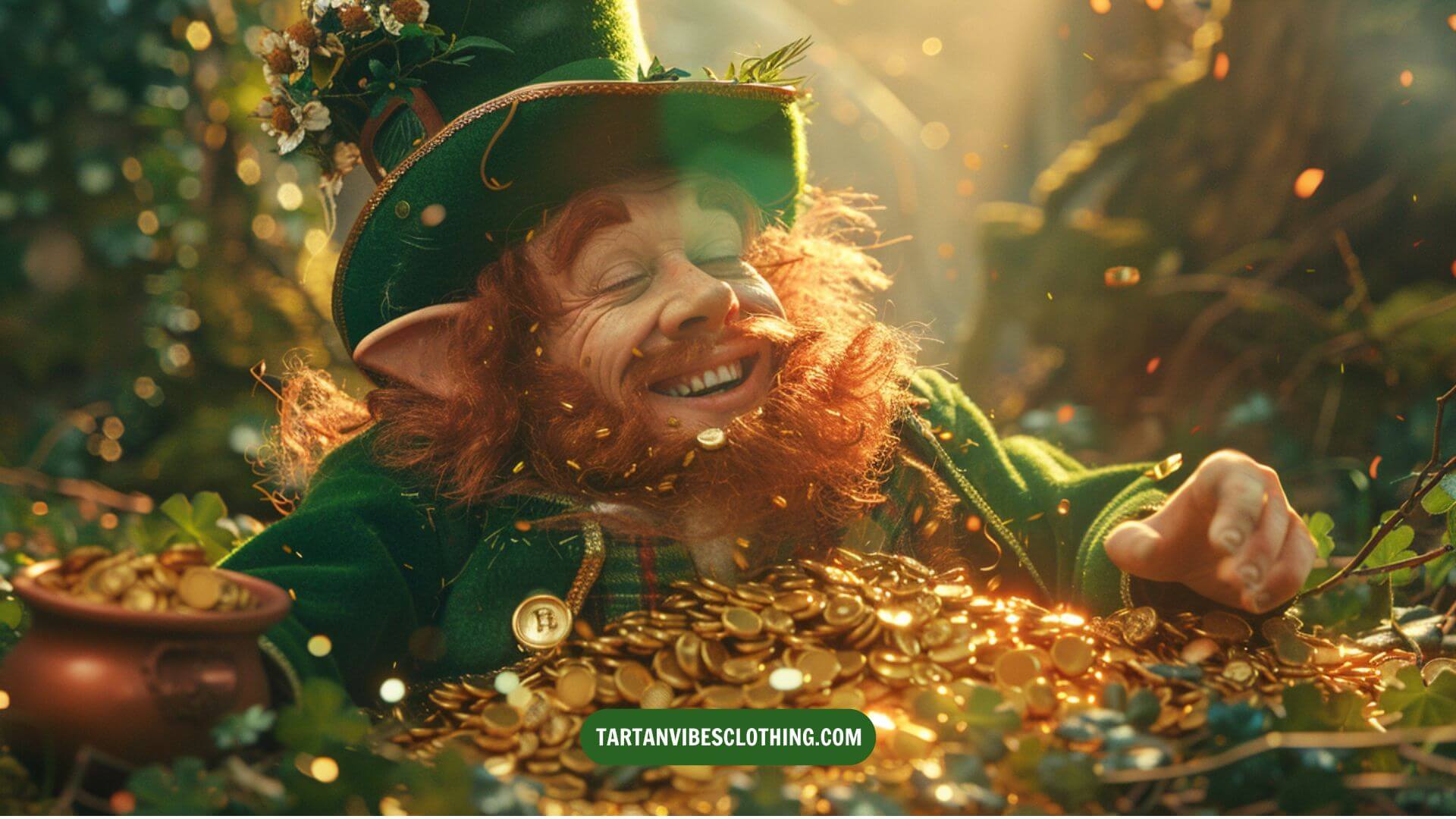
10. Green Beer
Green beer has become a fun and festive part of St. Patrick’s Day in Ireland and beyond, especially in the United States. The tradition dates back to 1914 when Dr. Thomas Hayes Curtin, an Irish-American coroner, introduced it at a St. Patrick’s Day party in New York. Originally, he used a laundry whitener to create the color—something unsafe today!
Now, green beer is made simply by adding a few drops of green food coloring to a light-colored beer like a pale ale or lager. While Ireland celebrates St. Patrick’s Day with traditional drinks like Guinness and Irish whiskey, green beer has become a widely recognized symbol, especially in the U.S. Though not authentically Irish, it’s a fun way for people worldwide to embrace the holiday spirit.

11. St Patrick’s crosses
Among the many symbols of St. Patrick’s Day, few hold as much religious and historical significance as St. Patrick’s Crosses. These crosses are not just decorative; they represent Ireland’s Christian heritage and the legacy of St. Patrick, the nation’s patron saint. There are two key crosses associated with St. Patrick’s Day:
The Cross Pattée: A broad-armed cross often seen in religious heraldry, it became linked to St. Patrick, the founding bishop of Ireland’s Christian Church.
St. Patrick’s Saltire: A red diagonal cross on a white background, used in the Order of St. Patrick (established in 1783). It was later merged into the Union Flag of the United Kingdom.
Both crosses are potent reminders of Ireland’s Christian roots and St. Patrick’s role in spreading the faith.
12. Saint Patrick’s Bell
One of Ireland’s most treasured artifacts, Saint Patrick’s Bell, is believed to have belonged to the saint himself. It was said to be removed from his tomb 60 years after his death and later enshrined as a holy relic.
🔔 What was it used for? The bell was rung to call people to prayer, representing faith, devotion, and St. Patrick’s enduring influence. Today, the original bell is displayed at the National Museum of Ireland in Dublin, symbolizing Ireland’s spiritual history.
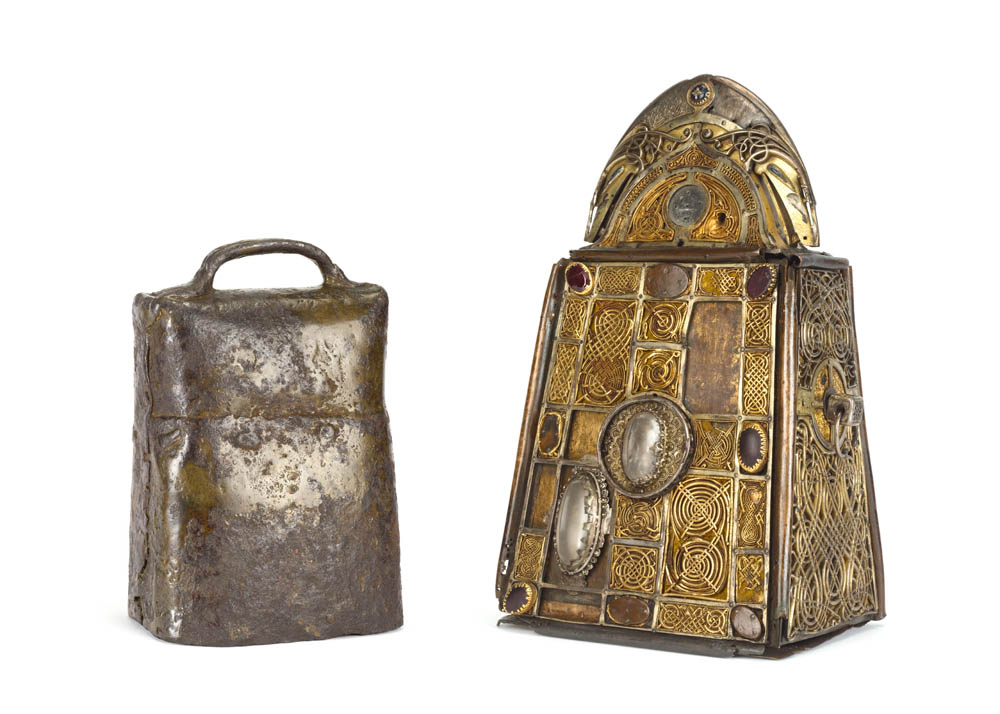
13. Claddagh
The Claddagh ring is one of the most cherished Irish symbols, featuring:
💚 A heart – representing love
🤝 Two hands – symbolizing friendship
👑 A crown – signifying loyalty
How to Wear It?
Heart facing outward (right hand) – Single and open to love.
Heart facing inward (right hand) – In a relationship.
Heart facing inward (left hand) – Married or engaged.
This iconic design originated in Claddagh, Galway, and has become a timeless symbol of Irish heritage.

14. Celtic Cross
The Celtic Cross is a Christian cross with a circular ring, blending:
The Sun Wheel – A pre-Christian Celtic symbol of eternity
Christian Faith – Introduced by St. Patrick during his mission in Ireland
Legend has it that St. Patrick combined the Christian cross with the Celtic sun symbol to help convert the Irish people to Christianity. Today, these intricately carved crosses are found in Irish graveyards, churches, and jewelry, symbolizing faith, unity, and heritage.

15. Tree of Life
The Tree of Life represents:
The connection between the heavens, earth, and underworld
Strength, wisdom, and family bonds
The eternal cycle of life, death, and rebirth
For the Celts, trees were sacred, symbolizing stability and spiritual connection. The roots reaching down and branches stretching up reflect balance and harmony with nature. Today, the Tree of Life is a beloved Irish symbol, often featured in art, tattoos, and jewelry.

16. Trinity Knot
The Trinity Knot, or the Triquetra, is one of the most recognizable Celtic symbols, often associated with St. Patrick’s Day. It features three interwoven loops with no beginning or end, creating a seamless design representing eternity, unity, and interconnectedness.
The Trinity Knot (Triquetra) consists of three interlocking loops, representing:
The Holy Trinity: The Father, Son, and Holy Spirit, making it a powerful emblem in Christianity.
Life Cycles: The three loops symbolize birth, life, and death, representing the natural flow of existence.
The Elements of Nature: In Celtic tradition, it embodies earth, water, and air, reinforcing a deep connection with the natural world.
Love and Commitment: Many couples exchange Trinity Knot rings to symbolize eternal love and unbreakable bonds.
The continuous, unbroken design represents eternity and interconnectedness. The Trinity Knot is one of Ireland’s most famous symbols in Celtic manuscripts, stone carvings, and jewelry.

17. Celtic Band
If you’ve ever seen a Celtic band wrapped around a ring, bracelet, or tattoo, you might have wondered: what’s the story behind this intricate design?
The Celtic Band is a continuous pattern of interwoven knots or spirals, symbolizing eternity, interconnectedness, and strength. Unlike traditional symbols, Celtic knotwork has no beginning or end, reinforcing the idea of infinity and the unbreakable nature of life’s journey.
The Celtic Band is a woven knot pattern with no beginning or end, symbolizing:
Unity & Strength: The design represents strong relationships, family, and community bonds.
Endless Love: Since the knots have no breaks, the band symbolizes love and loyalty that never fades.
The Cycle of Life: It reflects the continuous flow of time, growth, and transformation.
These patterns date back to early Celtic art and are widely used in wedding rings, tattoos, and decorative items. They represent lifelong commitment and cultural pride.
18. Triskel

Among the oldest and most mystical Celtic symbols, the Triskel (or Triskele) consists of three spirals radiating from a central point. Found in prehistoric carvings dating back over 5,000 years, this ancient design is deeply rooted in Celtic spirituality and philosophy.
The Triskel (Triskele) features three spirals or legs radiating from a central point, symbolizing:
The Three Realms of Existence: Land, Sea, and Sky, represent the Celtic view of the universe.
The Cycle of Life: Birth, Death, and Rebirth, reinforcing the belief in eternal renewal.
The Spiritual Journey: Many associate it with personal growth, enlightenment, and continuous progress.
Found in ancient Irish stone carvings, the Triskel reflects Ireland’s profound spiritual and philosophical beliefs. Today, it remains a widely used Celtic symbol in art and jewelry.
Conclusion
St. Patrick’s Day isn’t just about parades and green beer—it’s a celebration of Ireland’s heritage. St Patrick’s Day symbols carry deep history and meaning, from shamrocks to Celtic crosses, uniting people in the spirit of Irish tradition.
So, as March 17th approaches, embrace the spirit of St. Patrick’s Day! Raise a glass, wear your green with pride, and remember the stories behind these iconic timeless symbols. Sláinte! ☘️
Frequently Asked Questions
What are St. Patrick's Day symbols?
Shamrocks, green beer, and leprechauns are part and parcel of any self-respecting St. Patrick's Day celebration.
What is the traditional symbol of luck on St. Patrick's Day?
ShamrockThe leaves of the clover stands for faith, hope, luck and love. Whoever comes across a four-leaf clover is granted good luck and is protected against any bad luck. Shamrock – A shamrock (three-leaf clover) is the traditional symbol of Saint Patrick's Day.
What is associated with St. Patrick?
St. Patrick was a 5th-century missionary to Ireland and later served as bishop there. He is credited with bringing Christianity to parts of Ireland and was probably partly responsible for the Christianization of the Picts and Anglo-Saxons. He is one of the patron saints of Ireland.
Why do people wear green on St Patrick’s Day?
Green is one of the most recognizable St Patrick’s Day symbols. It represents Ireland’s lush landscapes, nicknamed “The Emerald Isle,” and its association with Irish Catholic heritage. Wearing green is also believed to make you invisible to leprechauns, preventing them from pinching you!




